- Utility Menu
- Writing Center
- Writing Program
- Designing Essay Assignments
by Gordon Harvey
Students often do their best and hardest thinking, and feel the greatest sense of mastery and growth, in their writing. Courses and assignments should be planned with this in mind. Three principles are paramount:
1. Name what you want and imagine students doing it
However free students are to range and explore in a paper, the general kind of paper you’re inviting has common components, operations, and criteria of success, and you should make these explicit. Having satisfied yourself, as you should, that what you’re asking is doable, with dignity, by writers just learning the material, try to anticipate in your prompt or discussions of the assignment the following queries:
- What is the purpose of this? How am I going beyond what we have done, or applying it in a new area, or practicing a key academic skill or kind of work?
- To what audience should I imagine myself writing?
- What is the main task or tasks, in a nutshell? What does that key word (e.g., analyze, significance of, critique, explore, interesting, support) really mean in this context or this field?
- What will be most challenging in this and what qualities will most distinguish a good paper? Where should I put my energy? (Lists of possible questions for students to answer in a paper are often not sufficiently prioritized to be helpful.)
- What misconceptions might I have about what I’m to do? (How is this like or unlike other papers I may have written?) Are there too-easy approaches I might take or likely pitfalls? An ambitious goal or standard that I might think I’m expected to meet but am not?
- What form will evidence take in my paper (e.g., block quotations? paraphrase? graphs or charts?) How should I cite it? Should I use/cite material from lecture or section?
- Are there some broad options for structure, emphasis, or approach that I’ll likely be choosing among?
- How should I get started on this? What would be a helpful (or unhelpful) way to take notes, gather data, discover a question or idea? Should I do research?
2. Take time in class to prepare students to succeed at the paper
Resist the impulse to think of class meetings as time for “content” and of writing as work done outside class. Your students won’t have mastered the art of paper writing (if such a mastery is possible) and won’t know the particular disciplinary expectations or moves relevant to the material at hand. Take time in class to show them:
- discuss the assignment in class when you give it, so students can see that you take it seriously, so they can ask questions about it, so they can have it in mind during subsequent class discussions;
- introduce the analytic vocabulary of your assignment into class discussions, and take opportunities to note relevant moves made in discussion or good paper topics that arise;
- have students practice key tasks in class discussions, or in informal writing they do in before or after discussions;
- show examples of writing that illustrates components and criteria of the assignment and that inspires (class readings can sometimes serve as illustrations of a writing principle; so can short excerpts of writing—e.g., a sampling of introductions; and so can bad writing—e.g., a list of problematic thesis statements);
- the topics of originality and plagiarism (what the temptations might be, how to avoid risks) should at some point be addressed directly.
3. Build in process
Ideas develop over time, in a process of posing and revising and getting feedback and revising some more. Assignments should allow for this process in the following ways:
- smaller assignments should prepare for larger ones later;
- students should do some thinking and writing before they write a draft and get a response to it (even if only a response to a proposal or thesis statement sent by email, or described in class);
- for larger papers, students should write and get response (using the skills vocabulary of the assignment) to a draft—at least an “oral draft” (condensed for delivery to the class);
- if possible, meet with students individually about their writing: nothing inspires them more than feeling that you care about their work and development;
- let students reflect on their own writing, in brief cover letters attached to drafts and revisions (these may also ask students to perform certain checks on what they have written, before submitting);
- have clear and firm policies about late work that nonetheless allow for exception if students talk to you in advance.
|
A PDF version of the text above. Provides guidance on creating carefully crafted and explicit paper assignments that encourage students to write better papers
|
- Pedagogy Workshops
- Responding to Student Writing
- Commenting Efficiently
- Vocabulary for Discussing Student Writing
- Guides to Teaching Writing
- HarvardWrites Instructor Toolkit
- Additional Resources for Teaching Fellows
A clear, arguable thesis will tell your readers where you are going to end up, but it can also help you figure out how to get them there. Put your thesis at the top of a blank page and then make a list of the points you will need to make to argue that thesis effectively.
For example, consider this example from the thesis handout : While Sandel argues persuasively that our instinct to “remake”(54) ourselves into something ever more perfect is a problem, his belief that we can always draw a line between what is medically necessary and what makes us simply “better than well”(51) is less convincing.
To argue this thesis, the author needs to do the following:
- Show what is persuasive about Sandel’s claims about the problems with striving for perfection.
- Show what is not convincing about Sandel’s claim that we can clearly distinguish between medically necessary enhancements and other enhancements.
Once you have broken down your thesis into main claims, you can then think about what sub-claims you will need to make in order to support each of those main claims. That step might look like this:
- Evidence that Sandel provides to support this claim
- Discussion of why this evidence is convincing even in light of potential counterarguments
- Discussion of cases when medically necessary enhancement and non-medical enhancement cannot be easily distinguished
- Analysis of what those cases mean for Sandel’s argument
- Consideration of counterarguments (what Sandel might say in response to this section of your argument)
Each argument you will make in an essay will be different, but this strategy will often be a useful first step in figuring out the path of your argument.

Strategy #2: Use subheadings, even if you remove them later
Scientific papers generally include standard subheadings to delineate different sections of the paper, including “introduction,” “methods,” and “discussion.” Even when you are not required to use subheadings, it can be helpful to put them into an early draft to help you see what you’ve written and to begin to think about how your ideas fit together. You can do this by typing subheadings above the sections of your draft.
If you’re having trouble figuring out how your ideas fit together, try beginning with informal subheadings like these:
- Introduction
- Explain the author’s main point
- Show why this main point doesn’t hold up when we consider this other example
- Explain the implications of what I’ve shown for our understanding of the author
- Show how that changes our understanding of the topic
For longer papers, you may decide to include subheadings to guide your reader through your argument. In those cases, you would need to revise your informal subheadings to be more useful for your readers. For example, if you have initially written in something like “explain the author’s main point,” your final subheading might be something like “Sandel’s main argument” or “Sandel’s opposition to genetic enhancement.” In other cases, once you have the key pieces of your argument in place, you will be able to remove the subheadings.
Strategy #3: Create a reverse outline from your draft
While you may have learned to outline a paper before writing a draft, this step is often difficult because our ideas develop as we write. In some cases, it can be more helpful to write a draft in which you get all of your ideas out and then do a “reverse outline” of what you’ve already written. This doesn’t have to be formal; you can just make a list of the point in each paragraph of your draft and then ask these questions:
- Are those points in an order that makes sense to you?
- Are there gaps in your argument?
- Do the topic sentences of the paragraphs clearly state these main points?
- Do you have more than one paragraph that focuses on the same point? If so, do you need both paragraphs?
- Do you have some paragraphs that include too many points? If so, would it make more sense to split them up?
- Do you make points near the end of the draft that would be more effective earlier in your paper?
- Are there points missing from this draft?
- picture_as_pdf Tips for Organizing Your Essay
Academic Editing and Proofreading
- Tips to Self-Edit Your Dissertation
- Guide to Essay Editing: Methods, Tips, & Examples
- Journal Article Proofreading: Process, Cost, & Checklist
- The A–Z of Dissertation Editing: Standard Rates & Involved Steps
- Research Paper Editing | Guide to a Perfect Research Paper
- Dissertation Proofreading | Definition & Standard Rates
- Thesis Proofreading | Definition, Importance & Standard Pricing
- Research Paper Proofreading | Definition, Significance & Standard Rates
- Essay Proofreading | Options, Cost & Checklist
- Top 10 Paper Editing Services of 2024 (Costs & Features)
- Top 10 Essay Checkers in 2024 (Free & Paid)
- Top 10 AI Proofreaders to Perfect Your Writing in 2024
- Top 10 English Correctors to Perfect Your Text in 2024
- Top 10 Essay Editing Services of 2024
- 10 Advanced AI Text Editors to Transform Writing in 2024
Academic Research
- Research Paper Outline: Templates & Examples
- How to Write a Research Paper: A Step-by-Step Guide
- How to Write a Lab Report: Examples from Academic Editors
- Research Methodology Guide: Writing Tips, Types, & Examples
- The 10 Best Essential Resources for Academic Research
- 100+ Useful ChatGPT Prompts for Thesis Writing in 2024
- Best ChatGPT Prompts for Academic Writing (100+ Prompts!)
- Sampling Methods Guide: Types, Strategies, and Examples
- Independent vs. Dependent Variables | Meaning & Examples
Academic Writing & Publishing
- Difference Between Paper Editing and Peer Review
- What are the different types of peer review?
- How to deal with rejection from a journal?
- Editing and Proofreading Academic Papers: A Short Guide
- How to Carry Out Secondary Research
- The Results Section of a Dissertation
- Checklist: Is my Article Ready for Submitting to Journals?
- Types of Research Articles to Boost Your Research Profile
- 8 Types of Peer Review Processes You Should Know
- The Ethics of Academic Research
- How does LaTeX based proofreading work?
- How to Improve Your Scientific Writing: A Short Guide
- Chicago Title, Cover Page & Body | Paper Format Guidelines
- How to Write a Thesis Statement: Examples & Tips
- Chicago Style Citation: Quick Guide & Examples
- The A-Z Of Publishing Your Article in A Journal
- What is Journal Article Editing? 3 Reasons You Need It
- 5 Powerful Personal Statement Examples (Template Included)
- Complete Guide to MLA Format (9th Edition)
- How to Cite a Book in APA Style | Format & Examples
- How to Start a Research Paper | Step-by-step Guide
- APA Citations Made Easy with Our Concise Guide for 2024
- A Step-by-Step Guide to APA Formatting Style (7th Edition)
- Top 10 Online Dissertation Editing Services of 2024
- Academic Writing in 2024: 5 Key Dos & Don’ts + Examples
- What Are the Standard Book Sizes for Publishing Your Book?
- MLA Works Cited Page: Quick Tips & Examples
- 2024’s Top 10 Thesis Statement Generators (Free Included!)
- Top 10 Title Page Generators for Students in 2024
- What Is an Open Access Journal? 10 Myths Busted!
- Primary vs. Secondary Sources: Definition, Types & Examples
- How To Write a College Admissions Essay That Stands Out
- How to Write a Dissertation & Thesis Conclusion (+ Examples)
- APA Journal Citation: 7 Types, In-Text Rules, & Examples
- What Is Predatory Publishing and How to Avoid It!
- What Is Plagiarism? Meaning, Types & Examples
- How to Write a Strong Dissertation & Thesis Introduction
- How to Cite a Book in MLA Format (9th Edition)
- How to Cite a Website in MLA Format | 9th Edition Rules
- 10 Best AI Conclusion Generators (Features & Pricing)
- Top 10 Academic Editing Services of 2024 [with Pricing]
- Additional Resources
- Plagiarism: How to avoid it in your thesis?
- Final Submission Checklist | Dissertation & Thesis
- 7 Useful MS Word Formatting Tips for Dissertation Writing
- How to Write a MEAL Paragraph: Writing Plan Explained in Detail
- Em Dash vs. En Dash vs. Hyphen: When to Use Which
- The 10 Best Citation Generators in 2024 | Free & Paid Plans!
- 2024’s Top 10 Self-Help Books for Better Living
- The 10 Best Free Character and Word Counters of 2024
- Citation and Referencing
- Citing References: APA, MLA, and Chicago
- How to Cite Sources in the MLA Format
- MLA Citation Examples: Cite Essays, Websites, Movies & More
- Citations and References: What Are They and Why They Matter
- APA Headings & Subheadings | Formatting Guidelines & Examples
- Formatting an APA Reference Page | Template & Examples
- Research Paper Format: APA, MLA, & Chicago Style
- How to Create an MLA Title Page | Format, Steps, & Examples
- How to Create an MLA Header | Format Guidelines & Examples
- MLA Annotated Bibliography | Guidelines and Examples
- APA Website Citation (7th Edition) Guide | Format & Examples
- APA Citation Examples: The Bible, TED Talk, PPT & More
- APA Header Format: 5 Steps & Running Head Examples
- APA Title Page Format Simplified | Examples + Free Template
- How to Write an Abstract in MLA Format: Tips & Examples
- 10 Best Free Plagiarism Checkers of 2024 [100% Free Tools]
- 5 Reasons to Cite Your Sources Properly | Avoid Plagiarism!
- Dissertation Writing Guide
- Writing a Dissertation Proposal
- The Acknowledgments Section of a Dissertation
- The Table of Contents Page of a Dissertation
- The Introduction Chapter of a Dissertation
- The Literature Review of a Dissertation
- The Only Dissertation Toolkit You’ll Ever Need!
- 5 Thesis Writing Tips for Master Procrastinators
- How to Write a Dissertation | 5 Tips from Academic Editors
- The 5 Things to Look for in a Dissertation Editing Service
- Top 10 Dissertation Editing & Proofreading Services
- Why is it important to add references to your thesis?
- Thesis Editing | Definition, Scope & Standard Rates
- Expert Formatting Tips on MS Word for Dissertations
- A 7-Step Guide on How to Choose a Dissertation Topic
- 350 Best Dissertation Topic Ideas for All Streams in 2024
- A Guide on How to Write an Abstract for a Research Paper
- Dissertation Defense: What to Expect and How to Prepare
- Creating a Dissertation Title Page (Examples & Templates)
- Essay Writing Guide
- Essential Research Tips for Essay Writing
- What Is a Mind Map? Free Mind Map Templates & Examples
- How to Write an Essay Outline: 5 Examples & Free Template
- How to Write an Essay Header: MLA and APA Essay Headers
- What Is an Essay? Structure, Parts, and Types
How to Write an Essay in 8 Simple Steps (Examples Included)
- 8 Types of Essays | Quick Summary with Examples
- Expository Essays | Step-by-Step Manual with Examples
- Narrative Essay | Step-by-Step Guide with Examples
- How to Write an Argumentative Essay (Examples Included)
- Guide to a Perfect Descriptive Essay [Examples & Outline Included]
- How to Start an Essay: 4 Introduction Paragraph Examples
- How to Write a Conclusion for an Essay (Examples Included!)
- How to Write an Impactful Personal Statement (Examples Included)
- Literary Analysis Essay: 5 Steps to a Perfect Assignment
- Compare and Contrast Essay | Quick Guide with Examples
- Top 10 Essay Writing Tools in 2024 | Plan, Write, Get Feedback
- Top AI Essay Writers in 2024: 10 Must-Haves
- 100 Best College Essay Topics & How to Pick the Perfect One!
- College Essay Format: Tips, Examples, and Free Template
- Structure of an Essay: 5 Tips to Write an Outstanding Essay
Still have questions? Leave a comment
Add Comment
Checklist: Dissertation Proposal
Enter your email id to get the downloadable right in your inbox!
Examples: Edited Papers
Need editing and proofreading services.

- Tags: Academic Writing , Essay , Essay Writing
Knowing how to write an essay can help you out significantly in both, your academic and professional life. An essay is a highly versatile nonfiction piece of writing that not only tests your knowledge of a topic but also your literary and argumentative skills.
Each essay requires the same basic process of planning, writing, and editing. Naturally, we’ve used these stages to group our steps on how to write an essay. So w ithout further ado, let’s get into it! Here are the eight steps to write an essay:
Stage 1: Planning
1. Pick an appropriate research topic
In certain cases, your teacher or professor may assign you a topic. However, in many cases, students have the freedom to select a topic of their choice. Make sure you choose a topic that you’re well versed in and have significant knowledge of.
Having prior knowledge of the topic will help you determine the subsequent steps to write an essay. It will also make your research process considerably easier.
2. Form an appropriate thesis statement
A thesis statement is the central idea or premise your essay is based on. It is usually a sentence or two long and is included in the introduction of the essay. The scope of your thesis statement depends on the type of your essay and its length.
For instance, the scope of the thesis statement for a 500–1000 word school essay will be narrower than a 1000–5000 word college essay. A rule of thumb is that your essay topic should be broad enough to gather enough information, but narrow enough to address specific points and not be vague. Here’s an example:
The invention of the airplane by the Wright Brothers in 1903 revolutionized transportation and paved the way for modern aviation. It represents a monumental achievement in human history that forever changed the course of human civilization.
3. Create an essay outline
Creating a well-organized essay outline not only gives structure and flow to your essay but also makes it more impactful and easy to understand. The idea is to collect the main points of information that support or elaborate on your thesis statement. You can also include references or examples under these main points.
For example, if your thesis statement revolves around the invention of the airplane, your main points will include travel before the invention of the airplane, how it was invented, and its effects on modern-day travel. Take a look:
The Wright Brothers’ invention had a massive impact on modern-day travel. The subsequent growth of the aviation industry led to increased accessibility of air travel to the general public.
Stage 2: Writing
4. Write a comprehensive introduction
After creating the basic outline, it is important to know how to write an essay. Begin your essay by introducing your voice and point of view to the reader. An introduction is usually a paragraph or two long and consists of three main parts:
- Background information
- Thesis statement
Let’s better understand this with the help of an example:
The Wright Brothers’ invention of the airplane in 1903 revolutionized the way humans travel and explore the world. Prior to this invention, transportation relied on trains, boats, and cars, which limited the distance and speed of travel. However, the airplane made air travel a reality, allowing people to reach far-off destinations in mere hours. This breakthrough paved the way for modern-day air travel, transforming the world into a smaller, more connected place. In this essay, we will explore the impact of the Wright Brothers’ invention on modern-day travel, including the growth of the aviation industry, increased accessibility of air travel to the general public, and the economic and cultural benefits of air travel.
Let’s understand how to construct each of these sections in more detail.
A. Construct an attractive hook
The opening sentence of an essay, also known as the hook, should include a powerful or startling statement that captures the reader’s attention. Depending on the type of your essay, it can be an interesting fact, a surprising statistic, or an engaging anecdote.
B. Provide relevant background information
While writing the introduction, it’s important to provide context or background information before including the thesis statement. The background information may include the time before a groundbreaking invention, the pros and cons of a significant discovery, or the short- and long-term effects of an event.
C. Edit the thesis statement
If you’ve constructed your thesis statement during the outlining stage, it’s time to edit it based on the background information you’ve provided. Observe the slight changes we’ve made to the scope of the thesis statement in the example above. This accommodates the bits of information we’ve provided in the background history.
5. Form relevant body paragraphs
Body paragraphs play a crucial role in supporting and expanding the central argument presented in the thesis statement. The number of body paragraphs depends on the type of essay as well as the scope of the thesis statement.
Most school-level essays contain three body paragraphs while college-level essays can vary in length depending on the assignment.
A well-crafted body paragraph consists of the following parts:
- A topic sentence
- Supporting information
- An analysis of the information
- A smooth transition to the next paragraph
Let’s understand this with the help of an example.
The Wright Brothers’ invention of the airplane revolutionized air travel. They achieved the first-ever successful powered flight with the Wright Flyer in 1903, after years of conducting experiments and studying flight principles. Despite their first flight lasting only 12 seconds, it was a significant milestone that paved the way for modern aviation. The Wright Brothers’ success can be attributed to their systematic approach to problem-solving, which included numerous experiments with gliders, the development of a wind tunnel to test their designs, and meticulous analysis and recording of their results. Their dedication and ingenuity forever changed the way we travel, making modern aviation possible.
Here’s a detailed overview of how to construct each of these sections.
A. Construct appropriate topic sentences
A topic sentence is the title of the body paragraph that elaborates on the thesis statement. It is the main idea on which the body paragraph is developed. Ensure that each topic sentence is relevant to the thesis statement and makes the essay flow seamlessly.
The order of topic sentences is key in creating an impactful essay. This order varies depending on the type of essay you choose to write. These sentences may be arranged chronologically, in the order of importance, or in a cause-and-effect format.
B. Provide supporting information
It is necessary to provide relevant supporting information and evidence to validate your topic statement. This may include examples, relevant statistics, history, or even personal anecdotes.
You should also remember to cite your sources wherever you use them to substantiate your arguments. Always give researchers and authors credit for their work!
C. Analyze the supporting information
After presenting the appropriate evidence, the next step is to conduct an in-depth analysis. Establish connections and provide additional details to strengthen the link between your topic sentence and the supporting information.
Depending on the type of essay, this step may also involve sharing your subjective opinions and key takeaways.
D. Create a smooth transition
In case you plan to create multiple body paragraphs, it is crucial to create a seamless transition between them. Transitional statements not only make the essay less jarring to read but also guide the reader in the right direction.
However, these statements need not be too lengthy and complicated. Use words such as “however”, “in addition to”, and “therefore” to convey transitions.
6. Construct an impactful conclusion
An impactful conclusion creates a lasting impression on the mind of the reader. Although it varies in length depending on the specific essay, the conclusion is typically a paragraph long.
It consists of
- A restated thesis statement
- Summary of the main points
- The broader implications of the thesis statement
Here’s an example of a well-structured conclusion:
The Wright Brothers’ invention of the airplane forever changed history by paving the way for modern aviation and countless aerospace advancements. Their persistence, innovation, and dedication to problem-solving led to the first successful powered flight in 1903, sparking a revolution in transportation that transformed the world. Today, air travel remains an integral part of our globalized society, highlighting the undeniable impact of the Wright Brothers’ contribution to human civilization.
Let’s take a closer look at how to construct each of these sections.
A. Restate the thesis statement
Your conclusion should call back to your original argument or thesis statement.
However, this does not mean repeating the thesis statement as is. The essence of your argument should remain the same, but it should also be modified and evolved as per the information presented in your essay.
B. Summarize important points
A powerful conclusion not only lingers in the reader’s mind but also provokes thought. You can create a strong impression on the reader by highlighting the most impactful points of your essay.
C. State the greater implications
End your essay with the most powerful and impactful part: the larger perspective. This can include a question you’d like to leave the reader with, the broader implications and impact of your thesis statement, or the long-term, lingering effects of your experience.
Make sure to include no new evidence or arguments, or to undermine your findings in any way.
Stage 3: Editing
7. Review your essay
Knowing how to write an essay is just one part of essay writing. Properly reviewing and editing your essay is just as important. Make sure to spend enough time going over your essay and adding any bits of information that you’ve missed.
This is also a good time to make minor structural changes in your essay.
8. Thoroughly proofread your essay
After making the necessary structural changes, recheck your essay word by word. It is important to not only correct major grammatical and spelling errors but also minor errors regarding the phrasing or tone of voice.
You can either choose to do this by yourself, ask a friend for assistance, or hire an essay proofreading service to go over your writing. To construct a fool-proof, error-free essay, it is helpful to have a trained pair of eyes go over it. Professional proofreaders can spot errors that are not visible to most people and set the right tone for your essay.
Now that you know the basics of how to write an essay, it’s time to learn about the specifics. Feel free to dig into the articles below and keep reading!
- How to Write an Essay Header in 4 Steps
- How to Write an Essay Outline
- What is an Expository Essay?
- How to Start an Essay
Frequently Asked Questions
What are the steps to write an essay, what is the best essay writing style, how do i start an essay introduction, what are the tips for effective essay writing, what makes a good essay.
Found this article helpful?
One comment on “ How to Write an Essay in 8 Simple Steps (Examples Included) ”
This is really help ful
Leave a Comment: Cancel reply
Your email address will not be published.
Your vs. You’re: When to Use Your and You’re
Your organization needs a technical editor: here’s why, your guide to the best ebook readers in 2024, writing for the web: 7 expert tips for web content writing.
Subscribe to our Newsletter
Get carefully curated resources about writing, editing, and publishing in the comfort of your inbox.
How to Copyright Your Book?
If you’ve thought about copyrighting your book, you’re on the right path.
© 2024 All rights reserved
- Terms of service
- Privacy policy
- Self Publishing Guide
- Pre-Publishing Steps
- Fiction Writing Tips
- Traditional Publishing
- Academic Writing and Publishing
- Partner with us
- Annual report
- Website content
- Marketing material
- Job Applicant
- Cover letter
- Resource Center
- Case studies
Purdue Online Writing Lab Purdue OWL® College of Liberal Arts
Welcome to the Purdue Online Writing Lab

Welcome to the Purdue OWL
This page is brought to you by the OWL at Purdue University. When printing this page, you must include the entire legal notice.
Copyright ©1995-2018 by The Writing Lab & The OWL at Purdue and Purdue University. All rights reserved. This material may not be published, reproduced, broadcast, rewritten, or redistributed without permission. Use of this site constitutes acceptance of our terms and conditions of fair use.
The Online Writing Lab (the Purdue OWL) at Purdue University houses writing resources and instructional material, and we provide these as a free service at Purdue. Students, members of the community, and users worldwide will find information to assist with many writing projects. Teachers and trainers may use this material for in-class and out-of-class instruction.
The On-Campus and Online versions of Purdue OWL assist clients in their development as writers—no matter what their skill level—with on-campus consultations, online participation, and community engagement. The Purdue OWL serves the Purdue West Lafayette and Indianapolis campuses and coordinates with local literacy initiatives. The Purdue OWL offers global support through online reference materials and services.
Social Media
Facebook Twitter

Essay Writing: A complete guide for students and teachers
P LANNING, PARAGRAPHING AND POLISHING: FINE-TUNING THE PERFECT ESSAY
Essay writing is an essential skill for every student. Whether writing a particular academic essay (such as persuasive, narrative, descriptive, or expository) or a timed exam essay, the key to getting good at writing is to write. Creating opportunities for our students to engage in extended writing activities will go a long way to helping them improve their skills as scribes.
But, putting the hours in alone will not be enough to attain the highest levels in essay writing. Practice must be meaningful. Once students have a broad overview of how to structure the various types of essays, they are ready to narrow in on the minor details that will enable them to fine-tune their work as a lean vehicle of their thoughts and ideas.

In this article, we will drill down to some aspects that will assist students in taking their essay writing skills up a notch. Many ideas and activities can be integrated into broader lesson plans based on essay writing. Often, though, they will work effectively in isolation – just as athletes isolate physical movements to drill that are relevant to their sport. When these movements become second nature, they can be repeated naturally in the context of the game or in our case, the writing of the essay.
THE ULTIMATE NONFICTION WRITING TEACHING RESOURCE

- 270 pages of the most effective teaching strategies
- 50+ digital tools ready right out of the box
- 75 editable resources for student differentiation
- Loads of tricks and tips to add to your teaching tool bag
- All explanations are reinforced with concrete examples.
- Links to high-quality video tutorials
- Clear objectives easy to match to the demands of your curriculum
Planning an essay

The Boys Scouts’ motto is famously ‘Be Prepared’. It’s a solid motto that can be applied to most aspects of life; essay writing is no different. Given the purpose of an essay is generally to present a logical and reasoned argument, investing time in organising arguments, ideas, and structure would seem to be time well spent.
Given that essays can take a wide range of forms and that we all have our own individual approaches to writing, it stands to reason that there will be no single best approach to the planning stage of essay writing. That said, there are several helpful hints and techniques we can share with our students to help them wrestle their ideas into a writable form. Let’s take a look at a few of the best of these:
BREAK THE QUESTION DOWN: UNDERSTAND YOUR ESSAY TOPIC.
Whether students are tackling an assignment that you have set for them in class or responding to an essay prompt in an exam situation, they should get into the habit of analyzing the nature of the task. To do this, they should unravel the question’s meaning or prompt. Students can practice this in class by responding to various essay titles, questions, and prompts, thereby gaining valuable experience breaking these down.
Have students work in groups to underline and dissect the keywords and phrases and discuss what exactly is being asked of them in the task. Are they being asked to discuss, describe, persuade, or explain? Understanding the exact nature of the task is crucial before going any further in the planning process, never mind the writing process .
BRAINSTORM AND MIND MAP WHAT YOU KNOW:
Once students have understood what the essay task asks them, they should consider what they know about the topic and, often, how they feel about it. When teaching essay writing, we so often emphasize that it is about expressing our opinions on things, but for our younger students what they think about something isn’t always obvious, even to themselves.
Brainstorming and mind-mapping what they know about a topic offers them an opportunity to uncover not just what they already know about a topic, but also gives them a chance to reveal to themselves what they think about the topic. This will help guide them in structuring their research and, later, the essay they will write . When writing an essay in an exam context, this may be the only ‘research’ the student can undertake before the writing, so practicing this will be even more important.
RESEARCH YOUR ESSAY
The previous step above should reveal to students the general direction their research will take. With the ubiquitousness of the internet, gone are the days of students relying on a single well-thumbed encyclopaedia from the school library as their sole authoritative source in their essay. If anything, the real problem for our students today is narrowing down their sources to a manageable number. Students should use the information from the previous step to help here. At this stage, it is important that they:
● Ensure the research material is directly relevant to the essay task
● Record in detail the sources of the information that they will use in their essay
● Engage with the material personally by asking questions and challenging their own biases
● Identify the key points that will be made in their essay
● Group ideas, counterarguments, and opinions together
● Identify the overarching argument they will make in their own essay.
Once these stages have been completed the student is ready to organise their points into a logical order.
WRITING YOUR ESSAY
There are a number of ways for students to organize their points in preparation for writing. They can use graphic organizers , post-it notes, or any number of available writing apps. The important thing for them to consider here is that their points should follow a logical progression. This progression of their argument will be expressed in the form of body paragraphs that will inform the structure of their finished essay.
The number of paragraphs contained in an essay will depend on a number of factors such as word limits, time limits, the complexity of the question etc. Regardless of the essay’s length, students should ensure their essay follows the Rule of Three in that every essay they write contains an introduction, body paragraphs, and a conclusion.
Generally speaking, essay paragraphs will focus on one main idea that is usually expressed in a topic sentence that is followed by a series of supporting sentences that bolster that main idea. The first and final sentences are of the most significance here with the first sentence of a paragraph making the point to the reader and the final sentence of the paragraph making the overall relevance to the essay’s argument crystal clear.
Though students will most likely be familiar with the broad generic structure of essays, it is worth investing time to ensure they have a clear conception of how each part of the essay works, that is, of the exact nature of the task it performs. Let’s review:
Common Essay Structure
Introduction: Provides the reader with context for the essay. It states the broad argument that the essay will make and informs the reader of the writer’s general perspective and approach to the question.
Body Paragraphs: These are the ‘meat’ of the essay and lay out the argument stated in the introduction point by point with supporting evidence.
Conclusion: Usually, the conclusion will restate the central argument while summarising the essay’s main supporting reasons before linking everything back to the original question.
ESSAY WRITING PARAGRAPH WRITING TIPS

● Each paragraph should focus on a single main idea
● Paragraphs should follow a logical sequence; students should group similar ideas together to avoid incoherence
● Paragraphs should be denoted consistently; students should choose either to indent or skip a line
● Transition words and phrases such as alternatively , consequently , in contrast should be used to give flow and provide a bridge between paragraphs.
HOW TO EDIT AN ESSAY

Students shouldn’t expect their essays to emerge from the writing process perfectly formed. Except in exam situations and the like, thorough editing is an essential aspect in the writing process.
Often, students struggle with this aspect of the process the most. After spending hours of effort on planning, research, and writing the first draft, students can be reluctant to go back over the same terrain they have so recently travelled. It is important at this point to give them some helpful guidelines to help them to know what to look out for. The following tips will provide just such help:
One Piece at a Time: There is a lot to look out for in the editing process and often students overlook aspects as they try to juggle too many balls during the process. One effective strategy to combat this is for students to perform a number of rounds of editing with each focusing on a different aspect. For example, the first round could focus on content, the second round on looking out for word repetition (use a thesaurus to help here), with the third attending to spelling and grammar.
Sum It Up: When reviewing the paragraphs they have written, a good starting point is for students to read each paragraph and attempt to sum up its main point in a single line. If this is not possible, their readers will most likely have difficulty following their train of thought too and the paragraph needs to be overhauled.
Let It Breathe: When possible, encourage students to allow some time for their essay to ‘breathe’ before returning to it for editing purposes. This may require some skilful time management on the part of the student, for example, a student rush-writing the night before the deadline does not lend itself to effective editing. Fresh eyes are one of the sharpest tools in the writer’s toolbox.
Read It Aloud: This time-tested editing method is a great way for students to identify mistakes and typos in their work. We tend to read things more slowly when reading aloud giving us the time to spot errors. Also, when we read silently our minds can often fill in the gaps or gloss over the mistakes that will become apparent when we read out loud.
Phone a Friend: Peer editing is another great way to identify errors that our brains may miss when reading our own work. Encourage students to partner up for a little ‘you scratch my back, I scratch yours’.
Use Tech Tools: We need to ensure our students have the mental tools to edit their own work and for this they will need a good grasp of English grammar and punctuation. However, there are also a wealth of tech tools such as spellcheck and grammar checks that can offer a great once-over option to catch anything students may have missed in earlier editing rounds.

Putting the Jewels on Display: While some struggle to edit, others struggle to let go. There comes a point when it is time for students to release their work to the reader. They must learn to relinquish control after the creation is complete. This will be much easier to achieve if the student feels that they have done everything in their control to ensure their essay is representative of the best of their abilities and if they have followed the advice here, they should be confident they have done so.
WRITING CHECKLISTS FOR ALL TEXT TYPES

⭐⭐⭐⭐⭐ (92 Reviews)
ESSAY WRITING video tutorials

Essay Papers Writing Online
Various formats for writing essays – tips and guidelines.
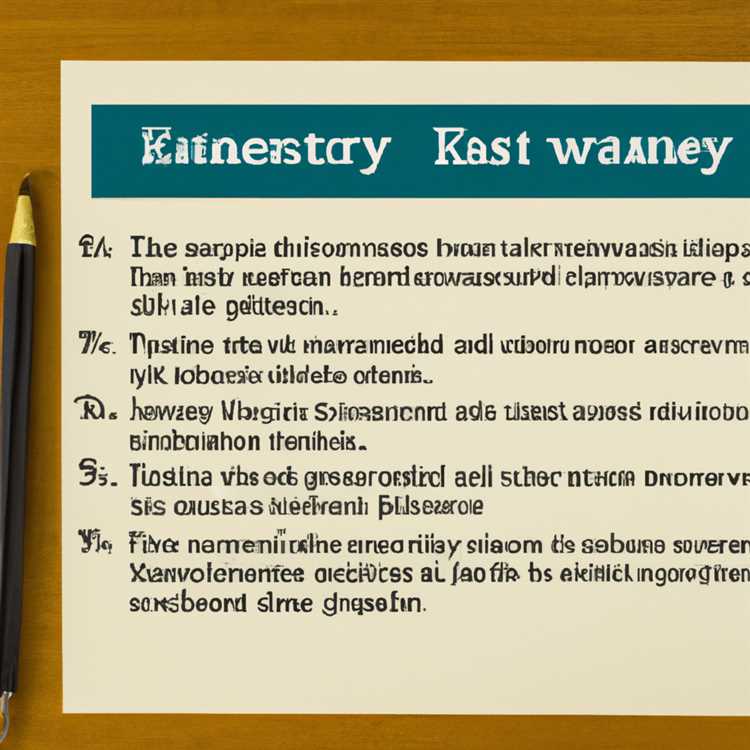
Welcome to the comprehensive guide that will enhance your understanding of various essay writing formats. Crafting a well-structured and organized essay is a crucial skill for students and professionals alike. Different types of essays require adherence to specific formatting guidelines to effectively communicate ideas and arguments.
Whether you are writing a persuasive essay, analytical essay, narrative essay, or any other type, this guide will provide you with valuable insights into the key elements of each format. By mastering the nuances of essay writing formats, you will be able to express your thoughts clearly, logically, and persuasively, captivating your readers and achieving your communication goals.
Through this comprehensive guide, you will learn about the essential components of various essay formats, including thesis statements, introductions, body paragraphs, supporting evidence, and conclusions. By understanding the specific requirements of each format, you can tailor your writing style to meet the expectations of your audience and effectively convey your message.
The Complete Essay Format Guide
Understanding the proper essay format is essential for writing effective essays. Whether you are a student or a professional writer, knowing how to structure your essays can greatly impact the clarity and coherence of your writing. In this guide, we will walk you through the essential elements of essay formats and provide tips on how to structure your essays effectively.
1. Introduction
- The introduction is the first paragraph of your essay and should provide a brief overview of the topic you will be discussing.
- It should also include a thesis statement, which explains the main argument or point of your essay.
2. Body Paragraphs
- The body of your essay should consist of several paragraphs that develop and support your thesis statement.
- Each paragraph should focus on a single idea or point and include evidence or examples to support it.
3. Conclusion
- The conclusion is the final paragraph of your essay and should summarize your main points and restate your thesis.
- It should also provide a closing thought or reflection on the topic you have discussed.
4. Formatting
- Essays should be double-spaced and formatted with a clear font, such as Times New Roman, in 12-point size.
- Margins should be set to one inch on all sides of the page.
By following these guidelines, you can ensure that your essays are well-structured and easy to read. Remember to revise and edit your essays carefully to ensure that they are well-written and coherent.
Understanding Essay Structure Basics
When it comes to writing an essay, understanding the basic structure is essential. A typical essay consists of three main parts: an introduction, body paragraphs, and a conclusion. Each of these sections serves a specific purpose and contributes to the overall coherence of the essay.
- Introduction: This is where you introduce the topic of your essay and provide some background information. The introduction should also include a thesis statement, which is the main idea or argument that you will be discussing in the essay.
- Body Paragraphs: The body of the essay consists of several paragraphs that develop and support the thesis statement. Each paragraph should focus on a single point or idea and provide evidence and examples to support it.
- Conclusion: The conclusion brings the essay to a close by restating the thesis statement and summarizing the main points of the essay. It is also a good place to discuss the broader implications of your argument or suggest areas for further research.
By following this basic structure, you can ensure that your essay is well-organized and easy for readers to follow. Remember to use transitions between paragraphs to help connect your ideas and create a smooth flow of information throughout the essay.
Types of Essay Formats
When it comes to writing essays, there are several different formats that you may encounter. Each format has its own unique structure and requirements. Here are some of the most common types of essay formats:
- Argumentative Essay: This type of essay presents a claim or argument and supports it with evidence and reasoning.
- Descriptive Essay: Descriptive essays focus on describing a person, place, object, or event in detail.
- Narrative Essay: Narrative essays tell a story and often include personal experiences or anecdotes.
- Expository Essay: Expository essays aim to explain and inform the reader about a specific topic.
- Persuasive Essay: Persuasive essays are similar to argumentative essays but focus more on convincing the reader to adopt a particular point of view.
- Compare and Contrast Essay: This type of essay analyzes the similarities and differences between two or more subjects.
- Cause and Effect Essay: Cause and effect essays explore the reasons behind a particular phenomenon and its outcomes.
It’s important to understand the requirements of each essay format and tailor your writing style accordingly to effectively convey your ideas and arguments.
Exploring Common Essay Styles
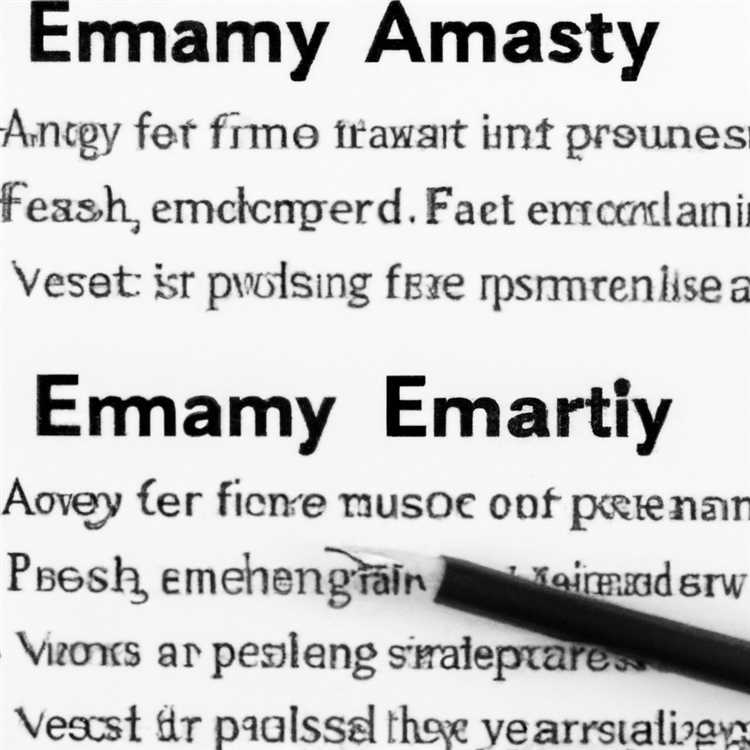
When it comes to writing essays, there are several common styles that you may encounter. Understanding the different types of essays can help you determine the best approach for your writing task. Here are some of the most common essay styles that you may come across:
1. Narrative Essays: These essays tell a story or recount an event. They often include personal anecdotes and can be quite engaging for the reader.
2. Descriptive Essays: In a descriptive essay, the writer paints a vivid picture of a person, place, object, or event. These essays appeal to the reader’s senses and emotions.
3. Expository Essays: Expository essays provide information, explain a topic, or analyze a concept. They are typically objective and present facts or opinions in a logical manner.
4. Persuasive Essays: Persuasive essays are meant to convince the reader of a particular point of view or argument. They often use evidence and reasoning to support a specific position.
5. Argumentative Essays: Similar to persuasive essays, argumentative essays present a claim or thesis and support it with evidence and analysis. However, argumentative essays also address counterarguments and refute opposing viewpoints.
By familiarizing yourself with these common essay styles, you can better tailor your writing to meet the requirements of your assignment and effectively communicate your ideas to your audience.
Comparing Argumentative and Narrative Essays
When it comes to essay writing, two common types of essays are argumentative and narrative essays. While they both aim to convey a message or argument, they differ in their purpose and structure.
- Argumentative Essays: Argumentative essays are designed to persuade the reader to adopt a particular point of view or take a specific action. These essays present a clear thesis statement and provide evidence to support the argument. They often involve research and logical reasoning to make a compelling case.
- Narrative Essays: Narrative essays, on the other hand, focus on telling a story or recounting an experience. They are often more personal and emotional, using descriptive language to engage the reader. Narrative essays may not have a thesis statement but instead focus on engaging the reader through vivid storytelling.
While argumentative essays rely on facts and evidence to support a specific viewpoint, narrative essays rely on personal experiences and storytelling to draw the reader in. It’s essential to understand the differences between these two essay formats to effectively convey your message and engage your audience.
Elements of a Well-Formatted Essay
Introduction : The introduction sets the stage for your essay, providing an overview of the topic and presenting the thesis statement.
Body Paragraphs : The body of the essay presents your arguments and evidence in support of the thesis statement. Each paragraph should focus on a single idea and provide clear evidence to support it.
Transitions : Transitions help to smoothly move from one idea to the next, connecting paragraphs and ensuring the essay flows logically.
Conclusion : The conclusion restates the thesis statement and summarizes the main points of the essay. It may also provide insights or recommendations based on the arguments presented.
Citations : Proper citations are essential in academic writing to give credit to the sources used and avoid plagiarism. Use the appropriate citation style required by your instructor.
Formatting : Pay attention to formatting elements such as font size, margins, spacing, and referencing style. Consistent formatting enhances readability and professionalism of your essay.
Key Components for a Strong Essay
When crafting a strong essay, there are several key components that you should consider to ensure that your writing is clear, coherent, and effective. These key components include:
1. A clear and concise thesis statement that presents the main argument or point of your essay.
2. Well-developed paragraphs that support and expand upon your thesis statement with relevant evidence and analysis.
3. Smooth transitions between paragraphs and ideas to guide the reader through your essay and maintain coherence.
4. Proper organization and structure, including an introduction, body paragraphs, and conclusion that effectively communicate your ideas.
5. Attention to detail, including grammar, punctuation, and spelling to ensure that your writing is polished and professional.
By incorporating these key components into your essay writing, you can create a strong and compelling piece that effectively conveys your message to your audience.

Choosing the Right Format for Your Essay
When it comes to writing an essay, choosing the right format is crucial for effectively communicating your ideas and arguments. There are several different essay formats to choose from, each with its own unique structure and guidelines. Here are some tips to help you select the best format for your essay:
1. Consider your audience: Think about who will be reading your essay and what format would be most appropriate for them. For example, a formal academic essay might require a more structured format, while a personal essay could be more freeform.
2. Determine your purpose: Consider the purpose of your essay and choose a format that will best suit your goals. If you’re trying to persuade your reader, a persuasive essay format might be most effective. If you’re analyzing a topic, an analytical essay format could be more suitable.
3. Follow guidelines: If you’re writing an essay for a class or publication, make sure to follow any specific guidelines provided. This could include requirements for formatting, citation style, and overall structure.
4. Experiment and revise: Don’t be afraid to experiment with different formats to see what works best for your essay. Once you’ve written a draft, revise and refine your work to ensure that the format enhances your message.
By taking these factors into account, you can choose the right format for your essay and ensure that your ideas are conveyed effectively to your readers.
Considerations for Selecting Essay Styles
When selecting an essay style, consider the purpose of your essay. Are you trying to persuade, inform, or analyze? The style you choose should align with your overall goal and message.
Think about your target audience. Are you writing for a scholarly audience, a general audience, or a specific group of readers? The style of your essay should be tailored to resonate with your intended readers.
Consider the requirements of your assignment. Does your instructor specify a particular style or format to follow? Make sure to adhere to any guidelines provided to ensure you meet the expectations of the assignment.
Reflect on your own writing strengths and weaknesses. Are you more comfortable with a formal, structured style, or do you excel in a more creative, narrative format? Choose a style that plays to your strengths as a writer.
Lastly, consider the conventions of the discipline or field you are writing in. Different subjects may have specific expectations for essay styles, so make sure to research and understand the norms of your field.
Related Post
How to master the art of writing expository essays and captivate your audience, convenient and reliable source to purchase college essays online, step-by-step guide to crafting a powerful literary analysis essay, unlock success with a comprehensive business research paper example guide, unlock your writing potential with writers college – transform your passion into profession, “unlocking the secrets of academic success – navigating the world of research papers in college”, master the art of sociological expression – elevate your writing skills in sociology.
Encyclopedia
Writing with artificial intelligence, design – the visual language that shapes our world.
- © 2023 by Joseph M. Moxley - Professor of English - USF
Design refers to much more than how something looks or works: Design is a powerful tool of communication that empowers writers, graphic designers, and product developers to reach their target audience at a viscera, visual level. Good design makes information easier to understand, more engaging, and more memorable. It creates emotional connections, influences perceptions, and shapes decisions. If your design is unappealing or confusing, you've lost your chance at engaging your audience in the 8 seconds they're willing to give attention to your work. The essay below defines design based on research and scholarship, explores the importance of design in our contemporary information ecology, and serves as an introduction to design resources @ Writing Commons.

Table of Contents
What is Design?
Design , most conventionally, refers to how something looks or works . For instance, by any measure, the Apple iPhone is well designed: the colors it displays are brilliant; it fits in your pocket; it’s easy to use as a camera, a recording device, or phone; and it provides easy access to friends, music, and the internet.
Yet, design may refer to more than whether or not a text or product looks good or accomplishes its aims . For instance, d esign may also be defined as
- a social construct
- a form of visual language , a mode of human communication
- a signifier of identity and community
- a subject of study, an academic discipline, a catechism regarding usr, an interpretative framework , based on principles of design .
Related Concepts: Composition ; Composing Processes ; Design Thinking ; Gestalt ; Information Architecture ; Information Design ; Semiotics
Definitions of Design
1. design refers to how a text, application, or product looks or works.
“ Design is a fun word. Some people think design means how it looks. But of course, if you dig deeper, it’s really how it works.” Steve Jobs
Design refers to the aesthetics and functionality of a text , application, or product—concepts often encapsulated under the banner of “look and feel.”
Aesthetics (Look):
This dimension of design involves the visual, tactile, and sometimes auditory elements of a product or system. It encompasses attributes such as color , shape , texture , typography , and layout . In terms of a digital application, for example, the choice of icons , the color scheme , typography , and the overall user interface (UI) fall under aesthetic considerations. These elements contribute to the overall visual appeal and user experience.
Functionality (Works):
This refers to the operational aspect of a design. It involves how well the product, application, or system serves its intended purpose. The functionality of a design is often evaluated based on its efficiency, effectiveness, and ease of use. In the case of a digital application, it would include aspects like navigation flow, load times, responsiveness, and overall usability.
In essence, the balance between aesthetics and functionality is key in design. A design that excels in both dimensions creates an engaging, user-friendly, and effective product or system. This outlook is crucial in fields like product design, web design, graphic design, and user experience (UX) design, among others.
For writers, d esign largely concerns
- the use of data visualizations and other elements of design and visual language
- the page design & scannability of a text .
2. Design is a Social, Historical Construct
Design, a social and historical construct, stands at the intersection of art, culture, history, and technology. It serves as a mirror to our collective intellect, reflecting our beliefs, history, and advancements. Each culture, each epoch has its unique interpretation and manifestation of design, thus weaving a rich, multifaceted tapestry of human creativity and evolution.
Art and Culture
Art and cultural norms seep deep into the core of design, infusing it with distinctive colors and patterns. Take, for example, the traditional Mexican design. Its bright geometric patterns symbolize the nation’s vibrant culture and rich historical narratives. It’s a testament to the cultural sensibilities that pervade design.
But look closer, and you see a paradox: despite periods of hardship and scarcity, Mexican people devoted resources to create opulent gold temples and intricate religious artifacts for the Catholic Church. This underscores design’s role as a reflection of cultural priorities and beliefs, sometimes extending beyond immediate practical needs.
Design reflects the dialogues , epistemologies , and circumstances of particular cultures and specific time periods. Consider, e.g., in the heart of the desert, the ancient Egyptians designed pyramids and temples that continue to astound us millennia later. These structures, built with an extraordinary precision that baffles modern engineers, stand as a testament to the design sensibilities of a civilization that existed over 4,000 years ago. Their hieroglyphic scripts and symbolic art formed a design language that communicated spiritual beliefs and pharaonic authority.
Fast forward to the Victorian era, characterized by its industrial growth and prosperity, and you see a markedly different design narrative. The Victorian designs embraced opulence and ornamentation, with an emphasis on detailing and a penchant for grandeur. This was reflected in their architecture, fashion, and even their typography.
In stark contrast, the 21st century has been marked by a shift towards minimalism in design. Embodying the mantra ‘less is more,’ modern design trends advocate simplicity and functionality. From the sleek lines of contemporary architecture to the user-friendly design of digital interfaces, the present-day design ethos emphasizes usability and clarity .
3. Design is a Form of Visual Language
Design refers to much more than how something looks or works. Design, at its core, is a sophisticated form of visual language . More than just aesthetically pleasing arrangements of elements, it holds the power to communicate, provoke thought, and stir emotions.
This communication occurs at a fundamental, prelinguistic level–as a form of felt sense . While conventional languages use words and syntax to convey meaning, design communicates through a rich vocabulary of visual elements: lines, shapes, colors, spaces, and typography. These elements are arranged using principles like alignment, balance, and contrast to create a cohesive visual message.
When the audience interacts with a design, they are not just passively observing. They are actively ‘reading’ these visual elements and interpreting them. This interpretation often happens instinctively, tapping into our innate human capacity for visual perception. We are, as a species, highly attuned to visual information. Our brains are wired to recognize patterns, discern contrasts, and respond to visual stimuli.
Audiences read the design of a text or product just as they read words and sentences . Yet rather than words or sentences , they read design elements : They trace the line on the page or screen. They note the images, colors , shapes , contrast , spaces , and typography of the copy . They consider the alignment , balance , proximity , repetition of symbols. And then they interpret these symbolic elements to mean something. Their interpretation may be experienced as a form of felt sense of gestalt . In other words, they engage in acts of communication .
4. Design May Function as a Signifier of Identity and Community
In business, companies spend small fortunes defining their brand. They aim to distinguish their products and services. Thus, it’s fairly commonplace for business and nonprofit organizations to have style guidelines.
Typically style guidelines
- call for standard written English
- call for a professional writing style
- call for a particular citation style
- define logo, color, and photo-usage guidelines.
5. Design May Refer to a Curriculum, a Catechism, a Subject of Study
Design is an extraordinarily broad field, a convergence point where disciplines such as arts, engineering, sciences, and humanities intersect and engage in a dynamic discourse . Its interdisciplinary nature stems from the fact that design problems often require diverse perspectives and multi-faceted solutions. Hence, design isn’t just about aesthetics or usability; it’s about crafting solutions that reconcile functionality, sustainability, social impact, and user experience.
In academic settings, design manifests as a robust field of study, encompassing a broad spectrum of topics, including
- accommodation s(how designs cater to different user needs)
- aesthetics (the principles that guide visual harmony and appeal)
- information architecture (how information is organized and structured in a design),
- information design (how information is presented)
- usability (how user-friendly a design is).
Communities of Practice: Shaping the Design Landscape
Alongside academia, communities of practice contribute significantly to the evolution of design as a field. These communities, composed of practitioners and scholars, engage in rigorous scholarship and empirical research. Their primary objective is to enhance clarity in communication and improve design outcomes.
These communities continually shape the design landscape through the development of conventions and best practices. They respond dynamically to technological advancements and societal shifts, adapting design practices to better fit new paradigms. This iterative process of exploration, adaptation, and refinement is what keeps design relevant and effective in a rapidly changing world.
Through this ongoing conversation of humankind and the ever-evolving technological landscape, design continues to evolve, offering innovative solutions to both old and new problems. This is a testament to design’s versatile nature and its inherent capacity to adapt, innovate, and inspire.
Related Concepts
Writers, designers, and usability experts design texts and products by composing with design elements (e.g., Color – Color Theory ; Line ; Shape ; Space ; Typography ). Additionally, they consult their knowledge of design principles — (e.g., alignment ; balance ; color ; Contrast ; Emphasis ; Gestalt, Gestalt Theory ; Proximity ; Repetition ) in order to inform their compositions.
Recommended Books on Design
- Cooper, A., Reimann, R., Cronin, D., & Noessel, C. (2014). About face: The essentials of interaction design (4th ed.). Wiley.
- Krug, S. (2013). Don’t make me think, revisited: A common sense approach to web usability (3rd ed.). New Riders.
- Norman, D. (2013). The design of everyday things: Revised and expanded edition . Basic Books.
- Williams, R. (2014). Non-designer’s design book (4th ed.). Peachpit Press.
Why does design matter?
In 2023, we’re living in a world where attention spans are shrinking, digital content is proliferating, and consumer expectations are escalating. The average person spent around 6 hours and 42 minutes online every day, and this time is scattered across various platforms – social media, news sites, video streaming, online shopping, and much more. The explosion of digital content means people are inundated with information, choices, and distractions, making it harder than ever to stand out. In this context, excellent design isn’t just nice to have – it’s a necessary tool for survival. It’s a way to respect your audience’s time, to reward their attention, and to rise above the noise.
Related Articles:
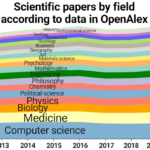
Data Visualization - Information Visualization - The Art of Visualizing Meaning For Better Decision-Making

Design Principles - The Big Design Principles You Need to Know to Create Compelling Messages

Elements of Art - How to Leverage the Power of Art to Make Visually Compelling Documents
Elements of design – master the fundamentals of visual composition.
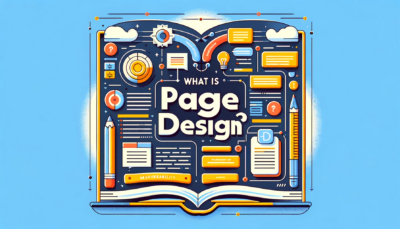
Page Design - How to Design Messages for Maximum Impact
Universal design principles - how to design for everyone.

Usability - How to Research & Improve Usability
Visual representation, recommended.

Academic Writing – How to Write for the Academic Community

Structured Revision – How to Revise Your Work

Professional Writing – How to Write for the Professional World

Credibility & Authority – How to Be Credible & Authoritative in Research, Speech & Writing

Citation Guide – Learn How to Cite Sources in Academic and Professional Writing

Page Design – How to Design Messages for Maximum Impact
Suggested edits.
- Please select the purpose of your message. * - Corrections, Typos, or Edits Technical Support/Problems using the site Advertising with Writing Commons Copyright Issues I am contacting you about something else
- Your full name
- Your email address *
- Page URL needing edits *
- Phone This field is for validation purposes and should be left unchanged.
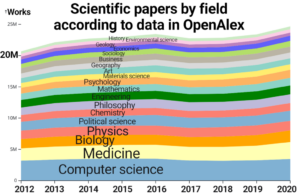
Unlock the power of data visualization to make complex data accessible and engaging. Learn the art and science of transforming numbers into compelling graphics, an invaluable skill that boosts your...

- Joseph M. Moxley
Principles of design refer to the discourse conventions, artistic traditions, and theories that inform the design of messages, products, and services. P.A.R.C. refers to the four primary design principles (proximity,...

The Elements of Art (also known as The Elements of Design) refers to color, form, line, shape, space, texture, and value. Working as a gestalt that communicates with audiences at...
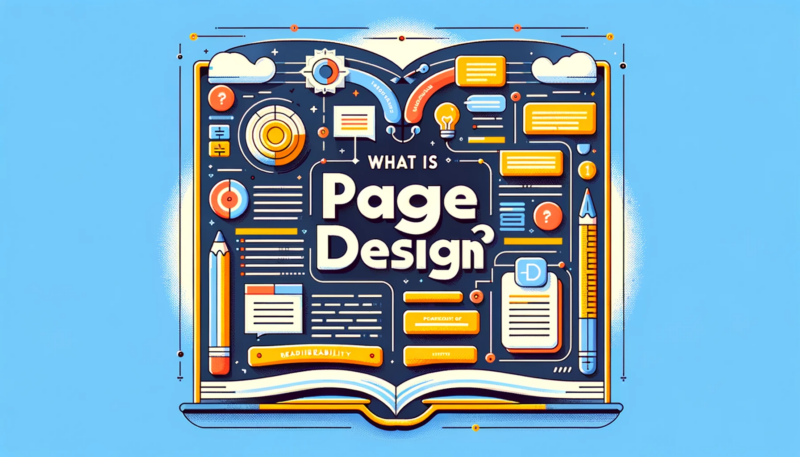
Page design refers to the strategic placement of information on a page or digital screen: Good page design can help you hook your readers’ curiosity and improve readability. Good page...
Universal design focuses on all potential users’ needs, abilities, and limitations. Rather than target a narrow user/customer segment, universal design values inclusivity: designers practicing universal design aim to make their...

Usability refers to the ease with which audiences can accurately interpret your message, understand your purpose, and navigate your information architecture. Whether you’re writing an essay, a research paper, or...
Featured Articles

Your path to academic success
Improve your paper with our award-winning Proofreading Services , Plagiarism Checker , Citation Generator , AI Detector & Knowledge Base .
Proofreading & Editing
Get expert help from Scribbr’s academic editors, who will proofread and edit your essay, paper, or dissertation to perfection.
Plagiarism Checker
Detect and resolve unintentional plagiarism with the Scribbr Plagiarism Checker, so you can submit your paper with confidence.
Citation Generator
Generate accurate citations with Scribbr’s free citation generator and save hours of repetitive work.

Happy to help you
You’re not alone. Together with our team and highly qualified editors , we help you answer all your questions about academic writing.
Open 24/7 – 365 days a year. Always available to help you.
Very satisfied students
This is our reason for working. We want to make all students happy, every day.
Very noice citation generator
While some documents can not be sited, it still can site a variety of sources online. It has many formats to offer and the best part is that their are not many adds compared to other citation generators. It is the best one i have so far.
a free citation website for college
a free citation website for college! I am obssessed with this citation website. Its really easy to use and keeps track of all your citations.
It was always easy using Scribbr
It was always easy using Scribbr, without Scribbr honestly I wouldn't be able to cite sources/references quickly. Knowing I'm professional crammer Scribbr helps with time. Would 100% Recommend
very useful remembers my citations for…
very useful remembers my citations for me, easy to access. Website design very intuative. Sometimes the citations arent accurate but- all good- easy to edit and fic
The feedback are very helpful
The feedback are very helpful. English is my second language and the edits and suggestions from the editor are helpful in enhancing the quality of my paper.
SIMPLY, THE BEST!!!!
It is easy to use Scribbr and it works…
It is easy to use Scribbr and it works well at gathering information about the sources and making sources. The user interface is easy to navigate and the folders makes it easy to store and organize sources.
Thorough proofreading
Thorough proofreading, good English, helpful comments to the clarity of the paper, and good comments explaining language rules.
Easy and fun to use!
Correct Formats for my Grad School Experience
Correct Formats for my Grad School Papers. It helped make my transition back to school as an older adult smoother and less stressful. Thank you.
Comprehensive and applicable content.
The content on this website is more comprehensive and, descriptive than most certified courses. The vivid examples make it even easier to understand and, remember.
Best citation generator out there
So much more simple than other citation generators. I love that you don't have to switch tabs in order to change between citation sources. No ads, there are no issues with this loading, and it seamlessly copies and pastes into whichever document you need. I was a user of many other generators in the past, since finding Scribbr, I will never use another one again.
I am in grad school at the Pacifica…
I am in grad school at the Pacifica Graduate Institute and have used the citation tool for all my final APA scholarly papers. This has worked for me, wonderfully! There only have been a few times where it did not have a citation for something I asked for. Overall, great tool! Thank you!
Scribbr makes it so easy to write…
Scribbr makes it so easy to write references saving so much time. I don't need to go looking up how to cite a reference and I can change styles with the click of a button.
Expensive, but I got my money's worth
I was very happy with my editor. He delivered my MA-thesis punctually (3 days) and has gone to great lengths to perfect my thesis on the linguistic level and has put in a great effort to accomodate my personal requests. All in all, I got a 1 (A+)! If you are unsure about something in your writing (my my case it was being concise), I'd recommend telling your editor straigthaway. They (or at least mine) really made sure I got my money's worth.
excellent, very helpful, usually accurate :)
It works well and has good auto citations…
It works well and has auto citations for almost every source.
Great service
Great service. Easy to use
Awesome website for citations
Awesome website for citations! Doesn't require any extra pay-walls and it works efficiently. Love the option to create lists and folders.
Everything you need to write an A-grade paper
Free resources used by 5,000,000 students every month.
Bite-sized videos that guide you through the writing process. Get the popcorn, sit back, and learn!
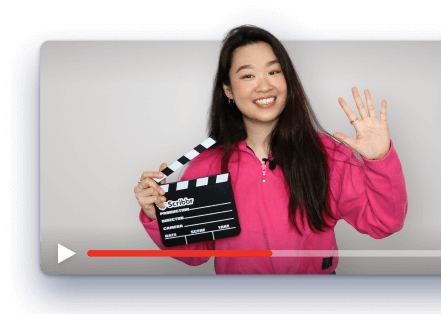
Lecture slides
Ready-made slides for teachers and professors that want to kickstart their lectures.
- Academic writing
- Citing sources
- Methodology
- Research process
- Dissertation structure
- Language rules
Accessible how-to guides full of examples that help you write a flawless essay, proposal, or dissertation.

Chrome extension
Cite any page or article with a single click right from your browser.
Time-saving templates that you can download and edit in Word or Google Docs.
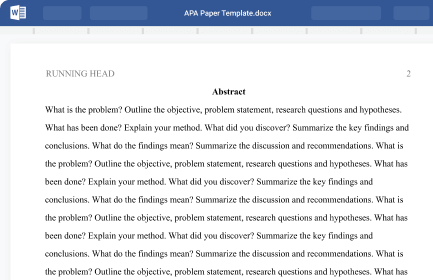
Help you achieve your academic goals
Whether we’re proofreading and editing , checking for plagiarism or AI content , generating citations, or writing useful Knowledge Base articles , our aim is to support students on their journey to become better academic writers.
We believe that every student should have the right tools for academic success. Free tools like a paraphrasing tool , grammar checker, summarizer and an AI Proofreader . We pave the way to your academic degree.
Ask our team
Want to contact us directly? No problem. We are always here for you.
- Email [email protected]
- Start live chat
- Call +1 (510) 822-8066
- WhatsApp +31 20 261 6040

Frequently asked questions
Our team helps students graduate by offering:
- A world-class citation generator
- Plagiarism Checker software powered by Turnitin
- Innovative Citation Checker software
- Professional proofreading services
- Over 300 helpful articles about academic writing, citing sources, plagiarism, and more
Scribbr specializes in editing study-related documents . We proofread:
- PhD dissertations
- Research proposals
- Personal statements
- Admission essays
- Motivation letters
- Reflection papers
- Journal articles
- Capstone projects
Scribbr’s Plagiarism Checker is powered by elements of Turnitin’s Similarity Checker , namely the plagiarism detection software and the Internet Archive and Premium Scholarly Publications content databases .
The add-on AI detector is powered by Scribbr’s proprietary software.
The Scribbr Citation Generator is developed using the open-source Citation Style Language (CSL) project and Frank Bennett’s citeproc-js . It’s the same technology used by dozens of other popular citation tools, including Mendeley and Zotero.
You can find all the citation styles and locales used in the Scribbr Citation Generator in our publicly accessible repository on Github .

IMAGES
COMMENTS
Courses and assignments should be planned with this in mind. Three principles are paramount: 1. Name what you want and imagine students doing it. However free students are to range and explore in a paper, the general kind of paper you're inviting has common components, operations, and criteria of success, and you should make these explicit ...
The Beginner's Guide to Writing an Essay | Steps & Examples An academic essay is a focused piece of writing that develops an idea or argument using evidence, analysis, and interpretation. There are many types of essays you might write as a student. The content and length of an essay depends on your level, subject of study, and course requirements.
The basic structure of an essay always consists of an introduction, a body, and a conclusion. But for many students, the most difficult part of structuring an essay is deciding how to organize information within the body. This article provides useful templates and tips to help you outline your essay, make decisions about your structure, and ...
Learn how to write an effective essay outline with clear guidelines and examples, and improve your argument and structure in academic writing.
Learn how to find an essay topic, structure your college essay, and how to write and revise a college essay all in our best essay writing guide.
An essay outline is a way of planning the structure of your essay before you start writing. In just 3 minutes, this video will show you how to organize your initial ideas into a coherent argument ...
When you are writing an essay for a course assignment, you should make sure you understand what type of claim you are being asked to make. Many of your assignments will be asking you to make analytical claims, which are based on interpretation of facts, data, or sources.
Unlock the art of essay writing in English. Read expert guidance on crafting engaging essays, mastering structure, coherence, and creating impactful introductions.
Learn tips for how to structure and go through the process of writing an essay that'll wow, whether a persuasive essay, college admissions essay, or thesis.
Outlining Trying to devise a structure for your essay can be one of the most difficult parts of the writing process. Making a detailed outline before you begin writing is a good way to make sure your ideas come across in a clear and logical order. A good outline will also save you time in the revision process, reducing the possibility that your ideas will need to be rearranged once you've ...
Knowing how to write an essay can help you out significantly in both, your academic and professional life. An essay is a highly versatile nonfiction piece of writing that not only tests your knowledge of a topic but also your literary and argumentative skills.
Writing An Award-Winning Essay When writing an essay, show, don't tell. Use stories, examples and anecdotes to individualize your essay; demonstrate the point you want to make.
Learn how to write effectively for academic, professional, and personal purposes at the Purdue Online Writing Lab, a free resource for writers of all levels.
Essay Writing Guide for Students: Master the art of essay writing with a comprehensive guide. Learn effective techniques for structuring and expressing ideas.
We take you through how to write an essay, and look at the different types of essay and the general structure you should follow.
This example guides you through the structure of an essay. It shows how to build an effective introduction, focused paragraphs, clear transitions between ideas, and a strong conclusion.
You are ready to write an essay after you have done these steps: Identified all the components that you must cover so that you address the essay question or prompt. Conducted your initial research and decided on your tentative position and line of argument. Created a preliminary outline for your essay that presents the information logically.
This page will take you on a journey designed to convince you that writing an essay is a worthwhile endeavour, and to guide you through the process of doing it well. If you follow it, you will improve your ability to read, write, and think critically.
Whether you're a first-time high school essay writer or a professional writer about to tackle another research paper, you'll need to understand the fundamentals of essay writing before you put pen to paper and write your first sentence.
College Essay Guy - Personal statement and college essay tips, guides, resources, consulting, and webinars for students, parents and counselors.
Learn about different essay writing formats, such as MLA, APA, and Chicago, to enhance your academic writing skills and improve the structure and organization of your essays.
Design refers to much more than how something looks or works: Design is a powerful tool of communication that empowers writers, graphic designers, and product developers to reach their target audience at a viscera, visual level. Good design makes information easier to understand, more engaging, and more memorable. It creates emotional connections, influences perceptions, and shapes decisions ...
भारत 23 अगस्त, 2024 को अपना पहला राष्ट्रीय अंतरिक्ष दिवस (first National Space Day) मनाने के लिए पूरी तरह तैयार है। यह दिन चंद्रयान-3 मिशन (Chandrayaan-3 mission) की सफलता के उपलक्ष्य में ...
The essay collection "Planes Flying Over a Monster" by Daniel Saldaña París explores the writing process and the texture of cities around the world. Accessibility statement Skip to main ...
Proofreading & Editing Get expert help from Scribbr's academic editors, who will proofread and edit your essay, paper, or dissertation to perfection.